Review: Robin 80th Anniversary 100-Page Super Spectacular #1
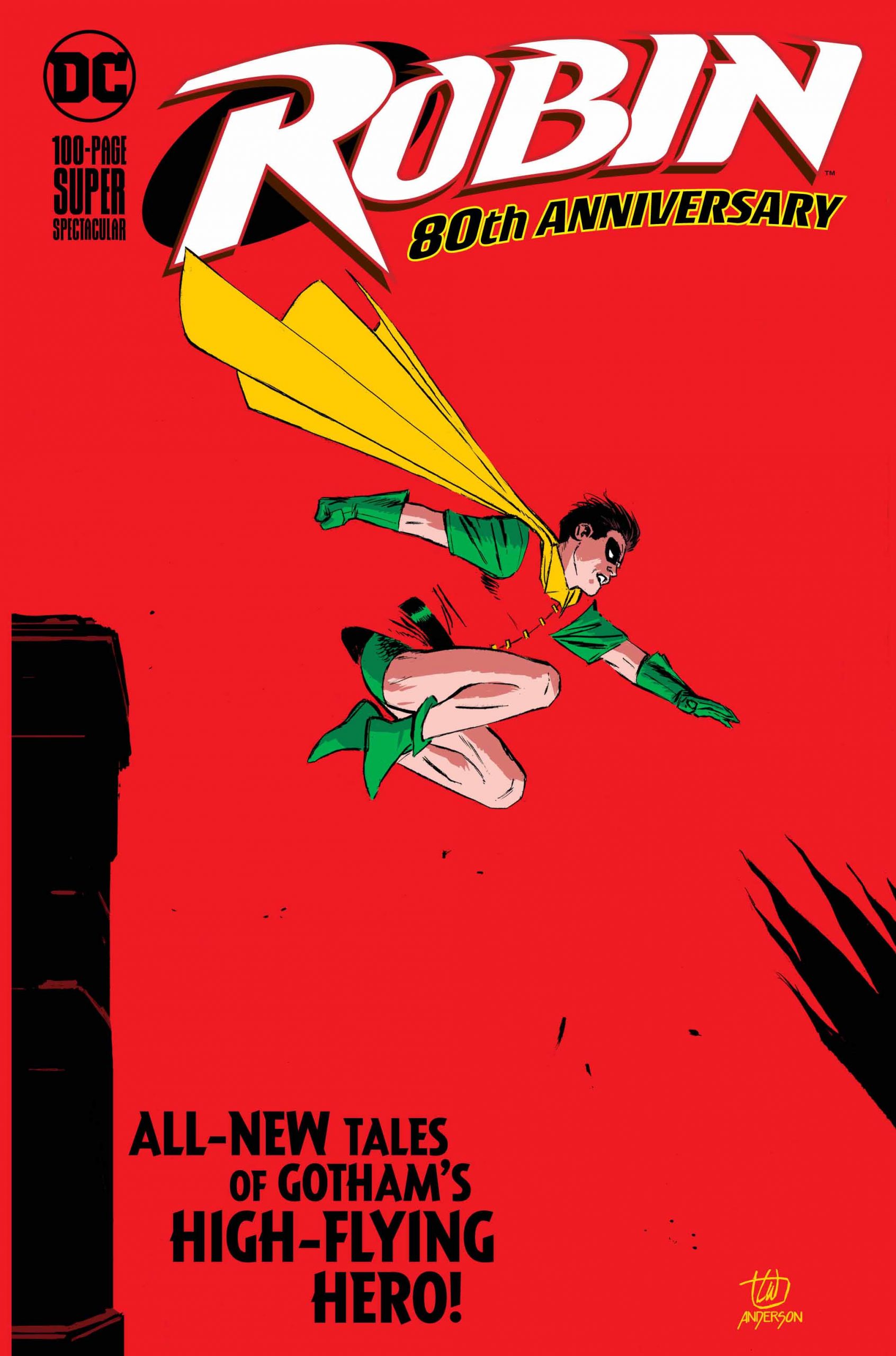 [Editor’s Note: This review may contain spoilers]
[Editor’s Note: This review may contain spoilers]
Writers: Marv Wolfman, Chuck Dixon, Devin Grayson, Tim Seeley & Tom King, Judd Winnick, Adam Beechen, James Tynion IV, Amy Wolfram, Peter J. Tomasi and Robbie Thompson
Art: Tom Grummett & Scott Hanna, Scott McDaniel & Rob Hunter, Dan Jurgens & Norm Rapmund, Mikel Janin, Dustin Nguyen, Freddie E. Williams II, Javier Fernandez, Damion Scott, Jorge Jimenez and Ramon Villalobos
Colors: Adriano Lucas, Protobunker, Hi-Fi, Jeromy Cox, John Kalisz, Jeremy Colwell, David Baron, Brad Anderson, Alejandro Sanchez and Tamra Bonvillain
Letters: Tom Naplitano, Carlos M. Mangual, Troy Peteri, Steve Wands, Rob Leigh and Andworld Design
Reviewed by: Matthew B. Lloyd
Summary
Robin is one of the most well-know comic book characters to ever grace the four color page. He’s just as iconic as Superman, Batman and Wonder Woman. However, he’s iconic in a way that DC’s Trinity isn’t, and most likely will never really be. He’s a character who’s been allowed to age, develop, change identities and become more than what he was when first introduced in Detective Comics #38 in 1940.
Robin 80th Anniversary 100-Page Super-Spectacular features stories celebrating not just the original Robin, Dick Grayson, but also his successors in the role- Jason Todd, Tim Drake, Stephanie Brown and Damian Wayne. Dick gets nearly half the issue with four tales in the issue. They span his career from Robin through Agent 37, and happily omit any mention of his lamentable “Ric” Grayson persona. Jason only gets one story, as does Stephanie. Not surprisingly, Time Drake and Damian Wayne are featured in two stories each. There’s a lot to discuss,here- “To the Batpoles, Robin!”
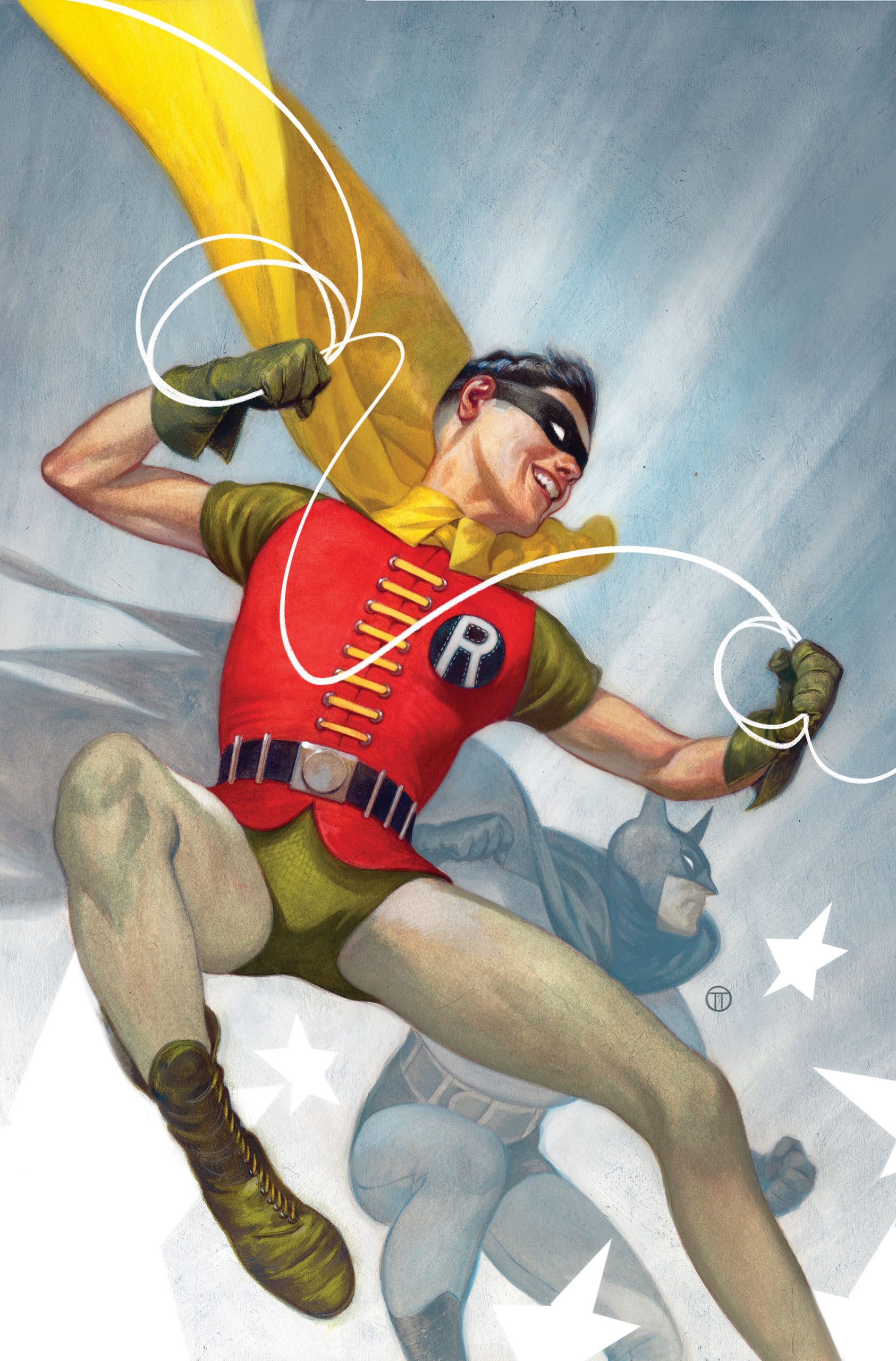
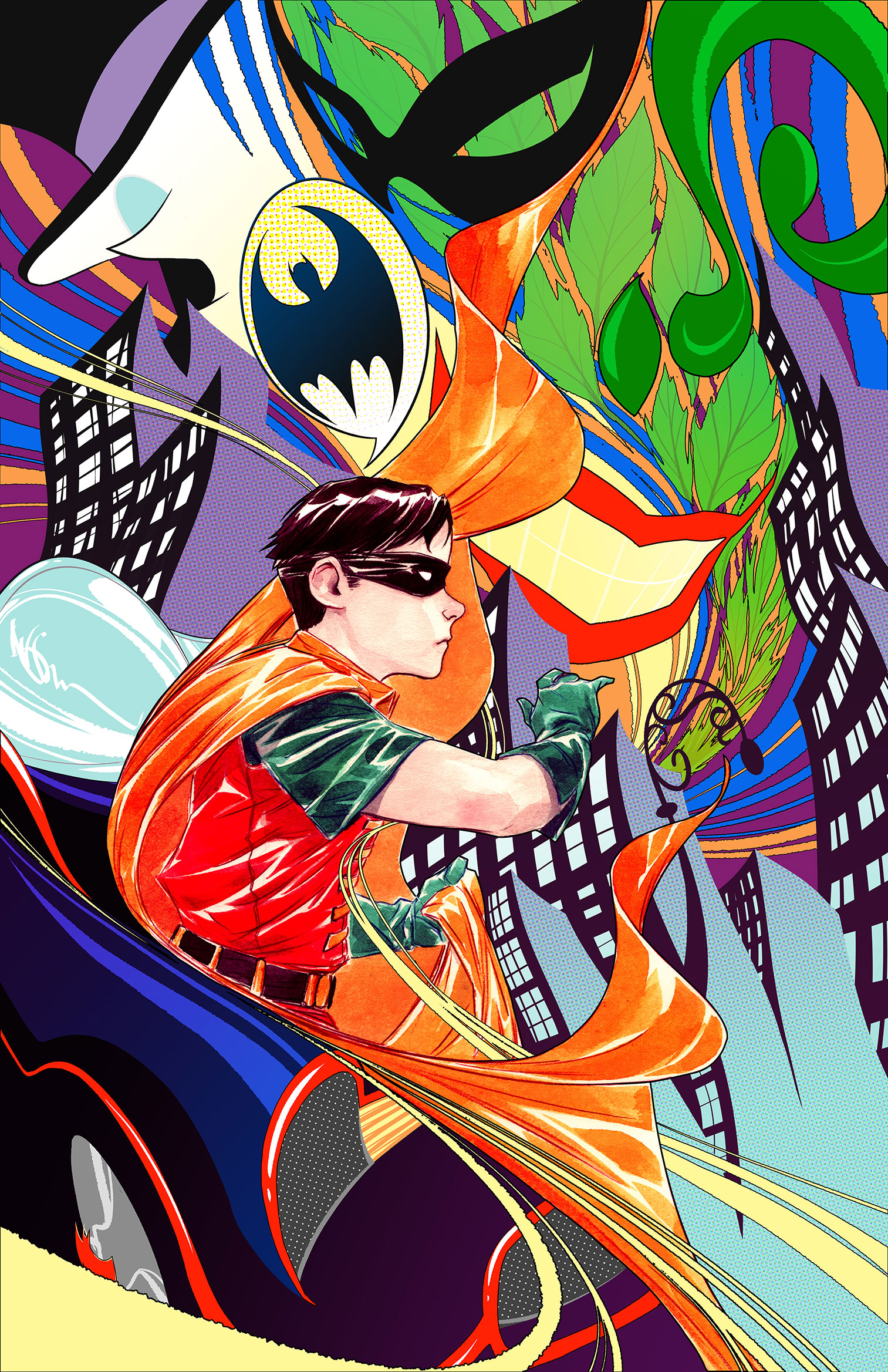
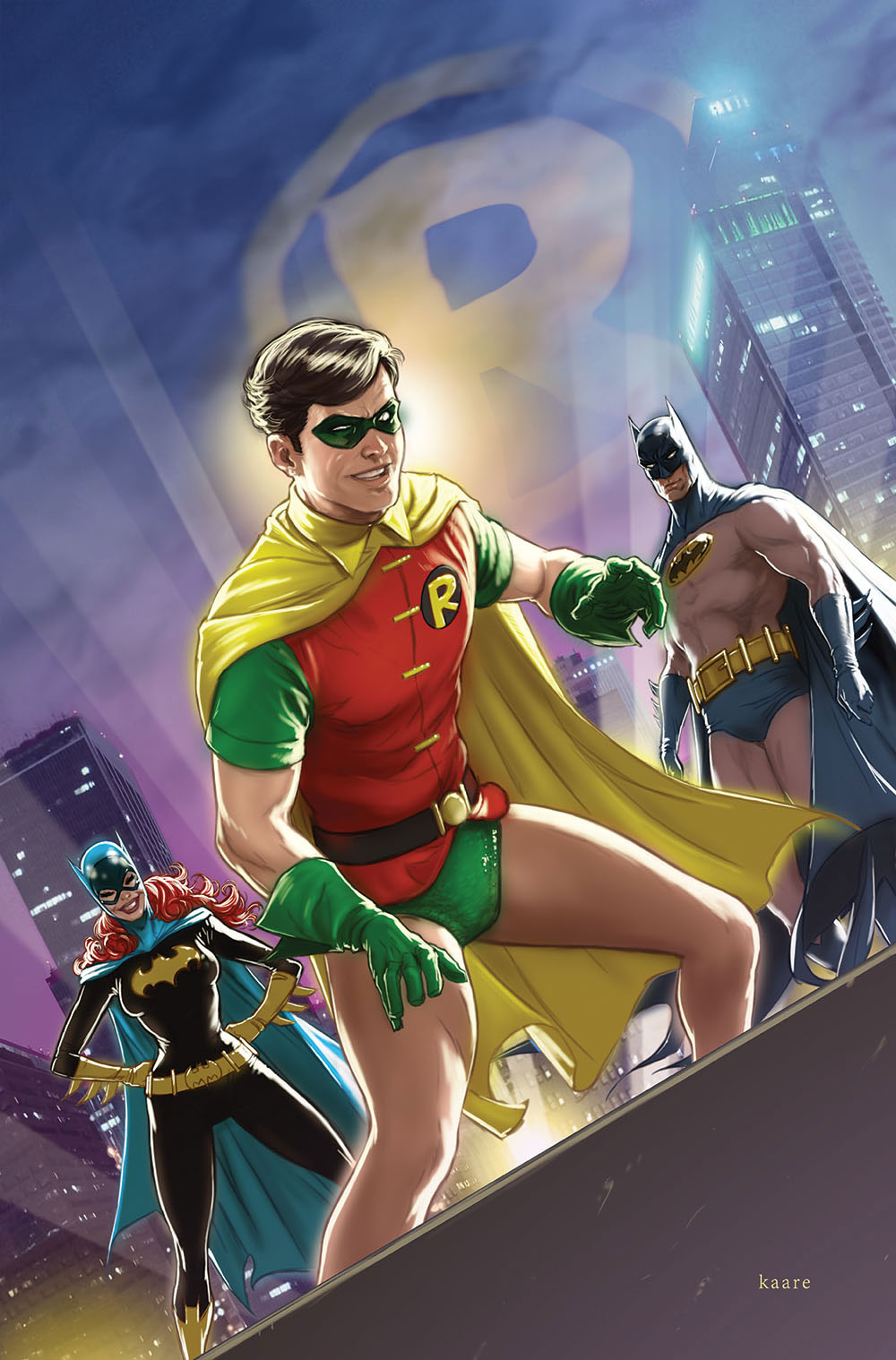
Positives
While there are ten stories in Robin 80th Anniversary 100-Page Super Spectacular, they all have some things in common at their cores. Each of these stories truly celebrates the individuals who have worn the Robin mantle. Additionally, they also manage to show how each of the characters is a unique take on Robin. Batman didn’t pick successive Dick Grayson clones after the original Boy Wonder left to become Nightwing! (More on that later actually.) Lastly, each story also seems to take place at a significant moment moment in the individual’s life.
These are not simply timeless tales of youthful adventure. They all have an emotional or developmental influence on the characters live. Perhaps, most surprisingly, the creators have previous associations with the characters at these times. Most obviously, Marv Wolfman who turns in the first story that depicts a critical moment in Dick’s decision to strike out on his own as Nightwing.
Tom Grummett and Scott Hanna join Wolfman for his story and the trio do a wonderful job in taking the reader back to 1983/84 as “A Little Nudge” depicts Dick Grayson’s thought process on leaving the Robin identity behind and becoming his own man. Batman appears a little bit of a jerk, but in the end it turns out to be his way of saying, “I love you.” It feels like a time capsule has been opened and DC has reprinted a forgotten tale from the era. Everything about the story is perfect. However, it’s the deeper relationship depicted between Bruce and Dick that makes it more than just a nostalgic journey. Cleverly, Wolfman makes it more than a talk in the Batcave, as well. There’s some classic Batman and Robin “to the rescue” action to top it off.
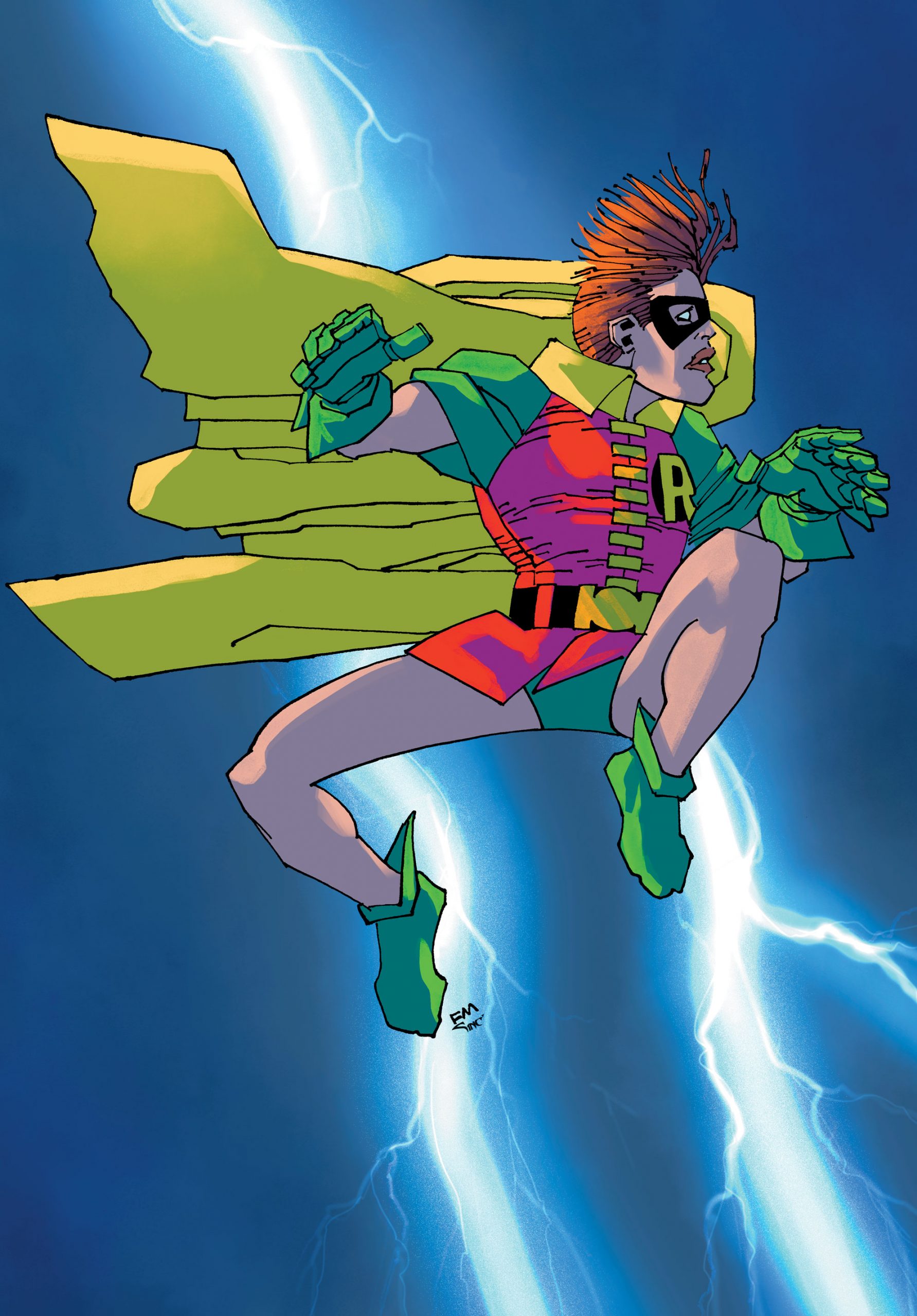
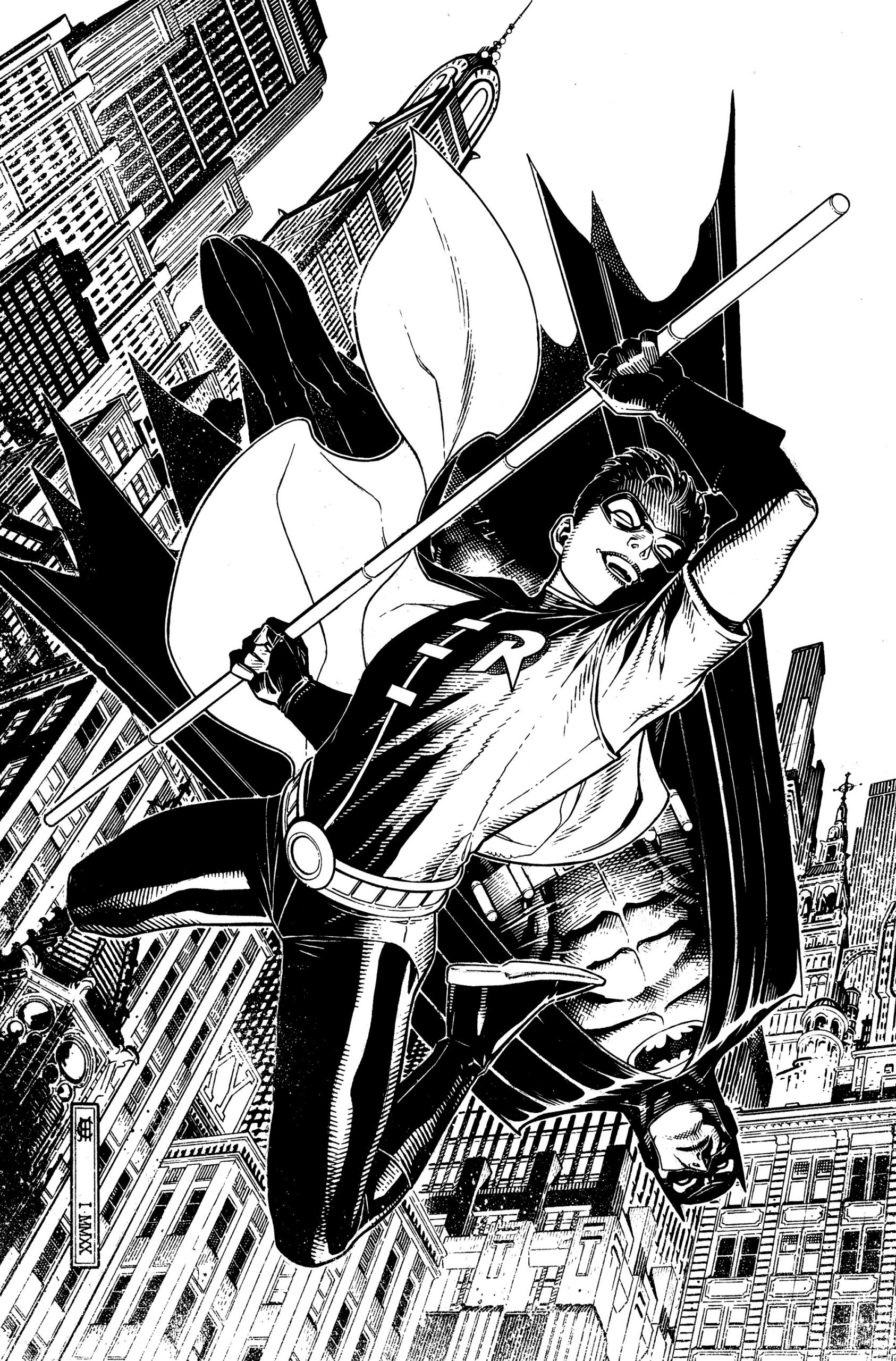
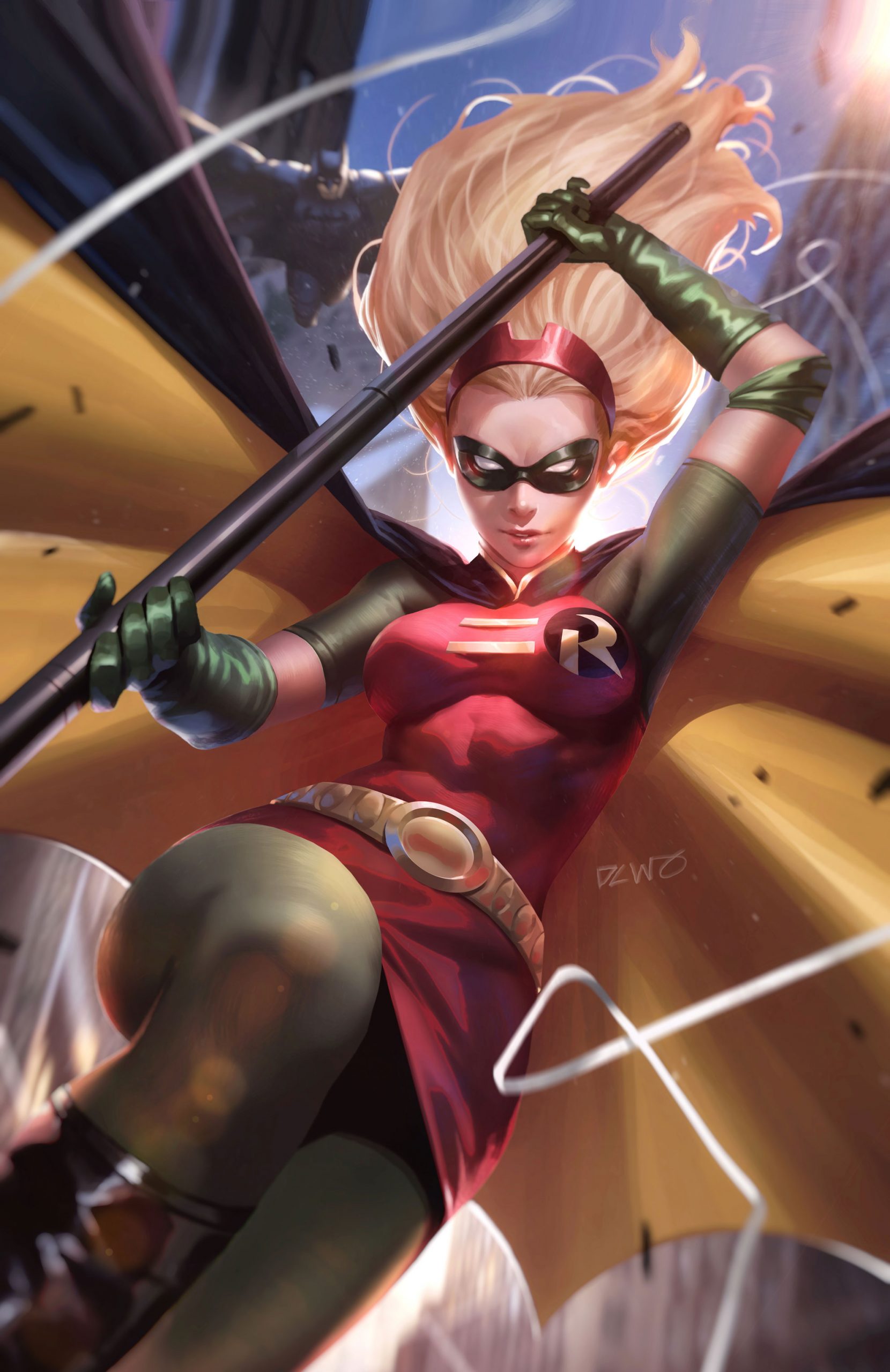
Positives Cont’d
The next three stories do much the same for the eras they represent. “Aftershocks” shows Dick in full Nightwing mode, “Team Building” reforms the Titans (Dick, Donna, Wally, Roy and Garth) in a tale that showcases Dick’s leadership skills leading a team. Finally, Tim Seeley, Tom King and Mikel Janin recapture the magic of Grayson, as Dick passes on some of the lessons he learned from Batman to a new Spyral Agent. It’s a real testament to the quality of Dick Grayson’s character that he continues to be recognizable in so many different forms. (Except when he’s not of, course- see “Ric” Grayson in current issues of Nightwing for a Dick Grayson that is NOT Dick Grayson.)
“More Time” stars Jason Todd in a story that depicts the span of the characters development. Interestingly, this short tale may present Jason Todd more sympathetically than any other I’ve read. Judd Winnick finds the balance between the Red Hood and the young boy Batman took in off the streets. You really feel for the boy in this story. And, there’s just enough that shows Jason hasn’t forgotten who he was.
Tim Drake is up next, and “Boy Wonders” demonstrates just how unique he is. Produced by the creative team from the “Rebirth” era of Detective Comics, James Tynion IV and Javier Fernandez, this story allows some of the other “Robins” to give some perspective to Tim on himself. It’s a fine moment that leads directly into Tim’s decision making in that “Gotham Knights” storyline.
Stephanie Brown’s single tale is indicative of her tenure as Robin. However, it leaves the reader wishing there were more stories with her and Batman and their unique relationship as Batman and Robin. Amy Wolfram wastes no space in showing just how different Stephanie is from previous Robins and that Batman has to rethink everything about training a Robin with Stephanie. This sheds some light on Bruce as well.

Positives Cont’d
Damian’s two stories are from opposite ends of the spectrum. “My Best Friend” is a heartwarming tale featuring the Super Sons, Damian and Jon Kent. “My Best Friend” showcases why the Super Sons concept is so unique and enjoyable. Peter J. Tomasi returns to the characters, giving Jon the opportunity to reflect upon his relationship with Damian for a school assignment. Tomasi’s character work is superb as he captures all the nuances of Jon’s relationship with his mother, Lois Lane, as well as the complexity of his friendship with Damian. As wonderful as this story is, it’s bittersweet as well. Will this be the last Super Sons tale by Tomasi with Jon and Damian as kids? Jon’s ageing by Brian Michael Bendis in his Superman titles has effectively put the Super Sons concept to ground. One can only hope that this isn’t the last we see of them, Bendis’s own attempt at recreating the magic with an older Jon falls flat and only reminds us of what could’ve been.
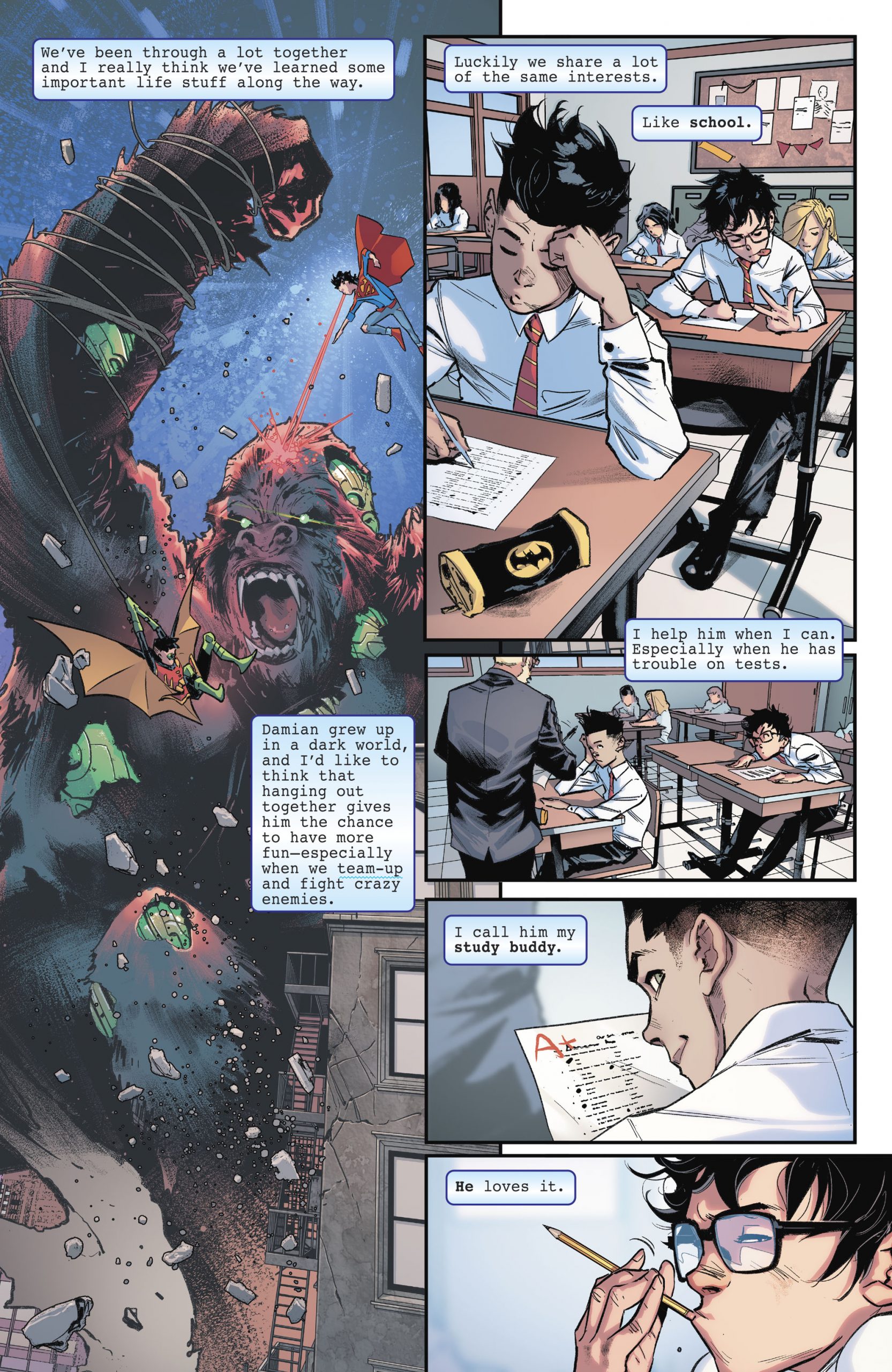
“Bat and Mouse” focuses on the difficult relationship between Damian and his father, the Batman. Most interestingly, this story leads directly into what’s going on in Teen Titans. It’s an effective use of a Robin 80th Anniversary 100-Page Super Spectacular to tie the issue into a current comic and the current Robin.
Negatives
Nothing in Robin 80th Anniversary 100-Page Super Spectacular is a true negative. The only small aspect of the Robin legacy that’s not addressed, and it’s probably for the best, is the fact that the original Jason Todd introduced in Batman #357 is essentially a different character than the one who becomes the Red Hood. After Crisis on Infinite Earths, Jason Todd got a retcon in the form of a personality makeover. And, it didn’t do his character any favors. His new attitude got him killed by the fans in the infamous “A Death in the Family” storyline that provided readers the opportunity to call a 1-900 number to vote on Jason Todd’s fate. Before Crisis on Infinite Earths, Jason Todd was very similar in characterization and background to Dick Grayson (Told you I”d get back to it!) While Jason’s makeover distanced him from Dick, he was certainly much less likable. It would’ve been nice to see some acknowledgement of this original Jason Todd considering he is technically the second Robin.
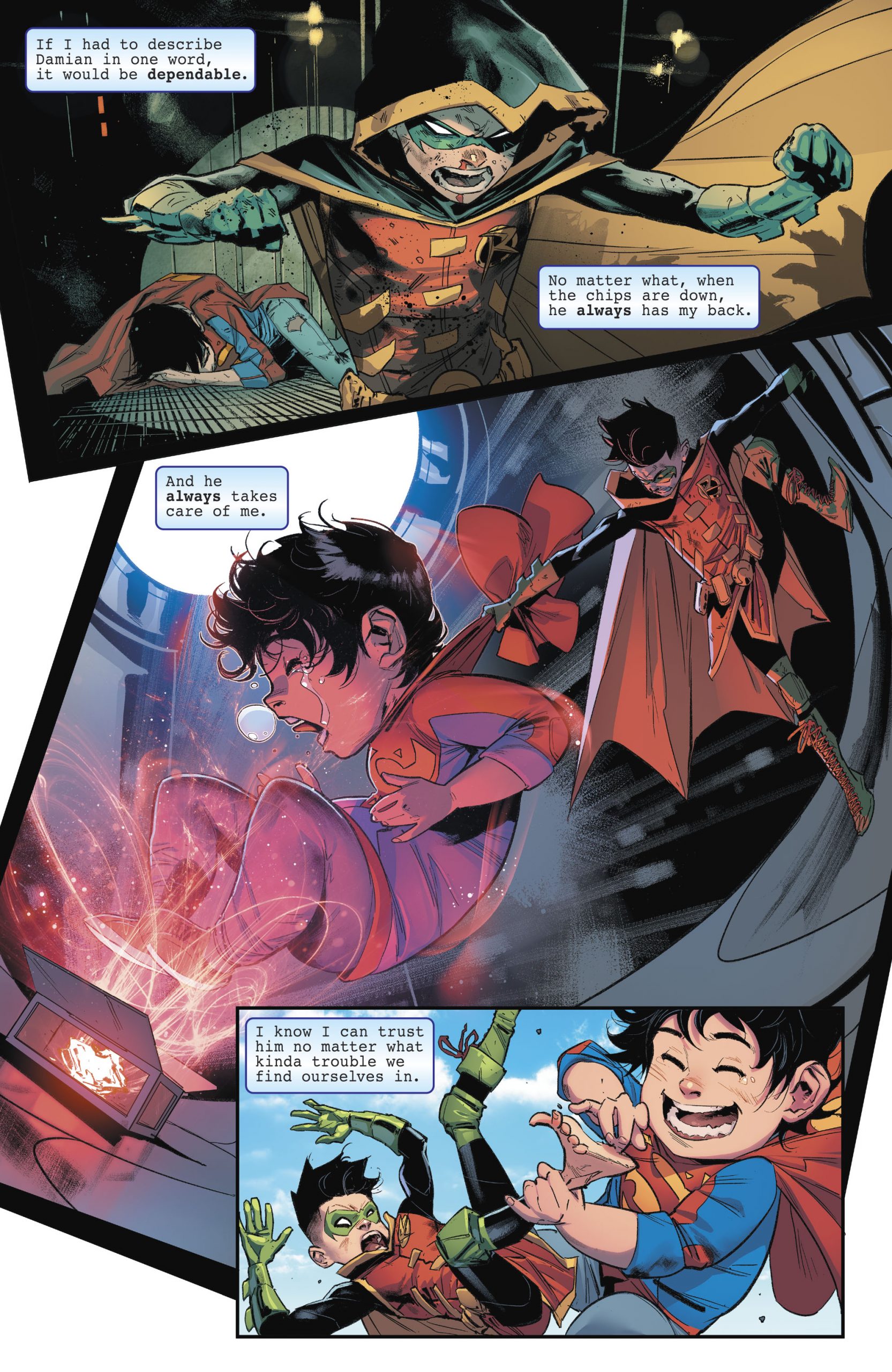
Verdict
Love him or hate him, Robin is one of DC’s icons and is more than deserving of this commemorative issue. Robin 80th Anniversary 100-Page Super Spectacular is more than just a simple collection of tales featuring the different Boy and Girl Wonders. The stories in this comic cover the ground between nostalgic remembrances of past tales, to pushing the current Robin’s journey forward. The creative teams masterfully find an emotional connection in each and every story, without exception. And that’s the real magic of the issue. It doesn’t hurt that Dick Grayson has long been a fan favorite character. Remarkably, the initial inspiration for Robin as a youthful connection for young readers into the dark and dangerous world of the Batman continues to resonate.
It doesn’t seem to matter who Robin is, the concept of the character persists because each iteration has become a fan favorite over the years. Despite readers often preferring the Batman as a lone Dark Knight, Robin has earned his place in Batman’s mythology. This issue both celebrates the characters and demonstrates the importance of a Robin’s place in Batman’s life.
